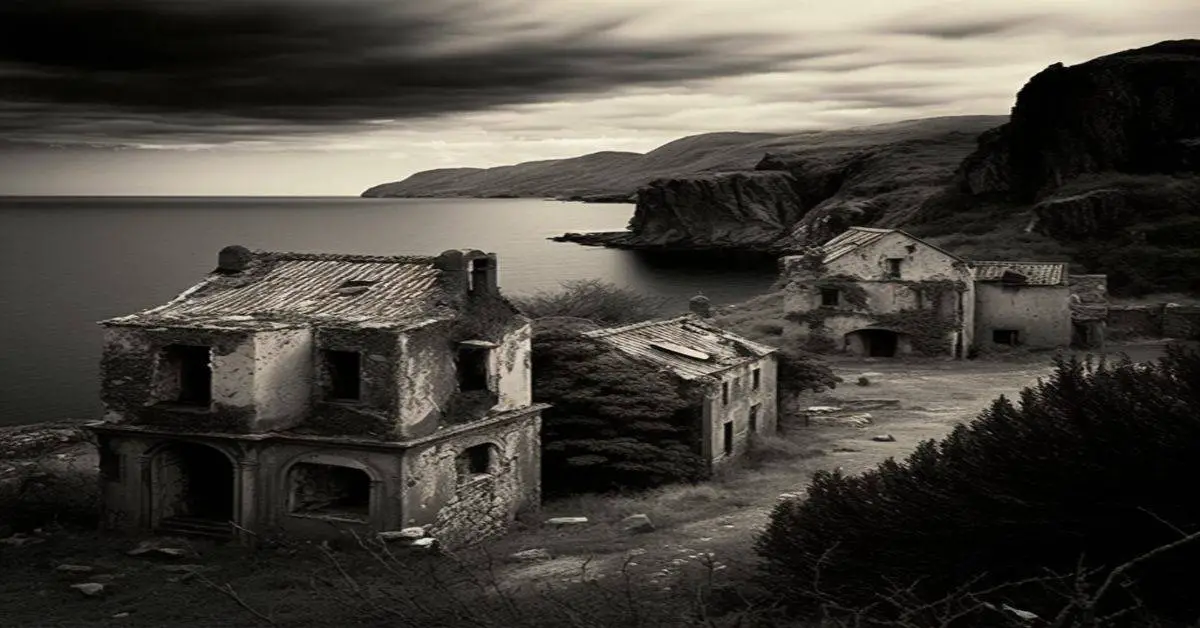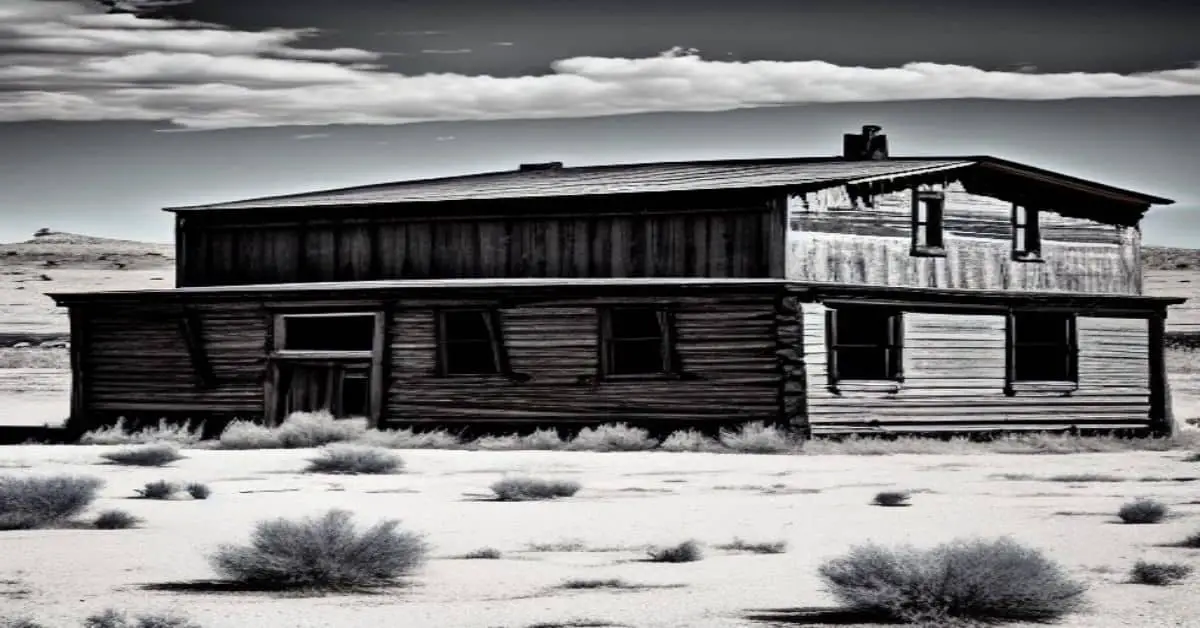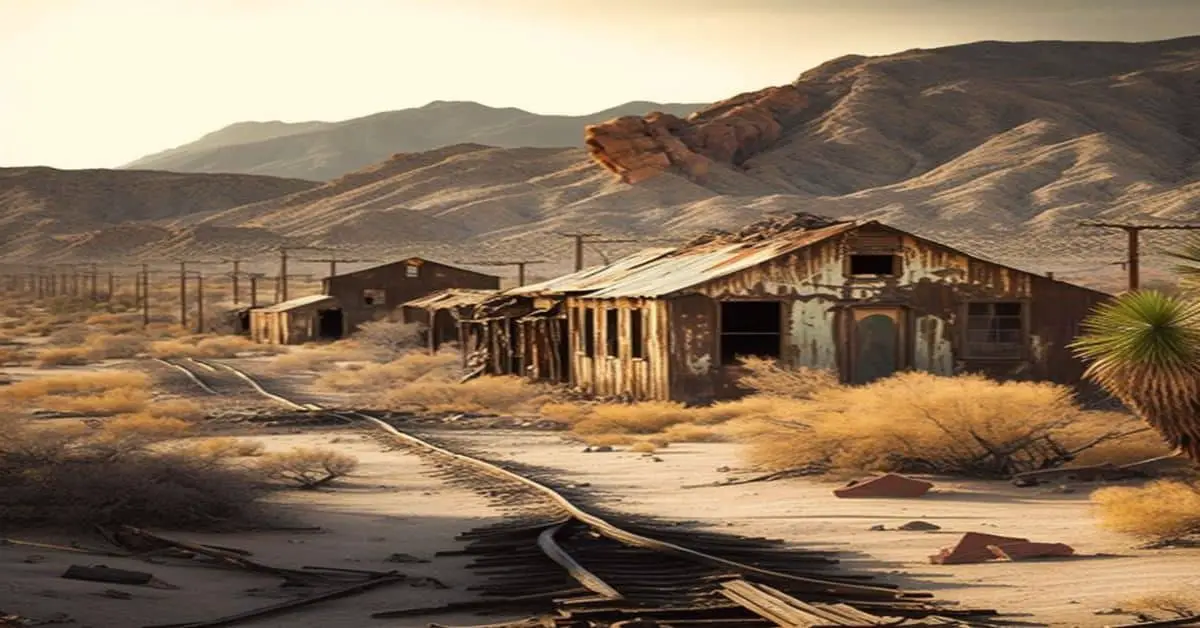Amidst the vast expanse of the Sonoran Desert lies a town frozen in time – Ehrenberg, Arizona. Once a bustling town on the banks of the Colorado River, it now stands as a ghost town, with only its cemetery and photographs as reminders of its heyday.
Like a mirage in the desert, Ehrenberg symbolizes the rise and fall of the old west, when the railroad revolutionized transportation and towns came and went with the ebb and flow of history.
Ehrenberg’s history is one of hardship, perseverance, and abandonment. Named after Hermann Ehrenberg, a German explorer and prospector, the town was established in the mid-1800s as a hub for mining, trade, and transportation. Its strategic location on the Colorado River made it a vital stopover for steamboats traveling up and down the river, and it soon became a bustling town with a population of around 500 people.
However, with the advent of the railroad, Ehrenberg’s fate was sealed, and most of its population moved elsewhere, leaving the town to wither away in the arid desert landscape.
Key Takeaways
- Ehrenberg, Arizona was a thriving town in the mid-1800s, established as a hub for mining, trade, and transportation.
- Its population was around 500 people in the mid-1870s, with mostly white settlers and possibly some Native American residents.
- The town’s decline began in the early 1900s with the replacement of steamboats by railroads, and most of the population had moved elsewhere by then, leaving Ehrenberg as a ghost town.
- Ehrenberg, Arizona serves as a reminder of the struggles faced by early settlers in the region and symbolizes the rise and fall of the old west, with its cemetery and historical photos as remnants of its heyday.
History and Origins
Ehrenberg, a former principal town on the Colorado river during the old west days, was named after Hermann Ehrenberg and had a population of about 500 people in the mid 1870s, according to historical records.
The town’s history can be traced back to the exploration expeditions of the mid-1800s, when the Colorado River was a vital transportation route for mining and trade.
Notable figures such as Kit Carson and John C. Fremont were among the first to explore the area, paving the way for establishing settlements like Ehrenberg.
The town continued to thrive as a hub for transportation and commerce until the early 1900s, when railroads replaced steamboats as the primary mode of transportation.
By this time, most of the population had moved elsewhere, leaving Ehrenberg as a ghost town.
Today, the town’s history can be seen in the cemetery’s remains and in historical photos, serving as a reminder of the once-thriving settlement on the banks of the Colorado River.
Population and Demographics
According to historical records, the town’s population during the mid 1870s was estimated to be around 500 people. However, by the early 1900s, most of the population had moved elsewhere, and Ehrenberg became a ghost town. The migration patterns of the town’s residents were likely influenced by the decline in the steamboat industry and the rise of railroads, which led to the development of other towns and cities in the region.
Little information is available about Ehrenberg’s population’s cultural diversity during its heyday. However, the town’s residents likely were mostly white settlers and their families, given the period and location. It is possible that there were also some Native American residents in the area, as the Colorado River was an important source of food and transportation for many tribes in the region.
Overall, the population of Ehrenberg reflects the larger trends of migration and settlement in the American West during the 19th and early 20th centuries.
Present Day Status
The remnants of a once-thriving settlement are now relegated to the pages of history, with only a cemetery serving as a tangible reminder of the past. Ehrenberg, a ghost town situated in the heart of the desert landscape of Arizona, has been reduced to nothing more than a tourist attraction.
The town’s population dwindled over the years, as the economic impact of railroads replaced steamboats in the early 1900s. Today, the town remains desolate and abandoned, with no signs of revival.
The town’s current state is a testament to the harsh realities of life in the desert. The lack of water and resources in the area made it difficult for the town to sustain itself economically.
Although the present-day town of Ehrenberg still exists, the ghost town serves as a reminder of the struggles early settlers face in the region. Despite its bleak present, Ehrenberg’s historical significance and unique charm continue to attract visitors from across the country.
Frequently Asked Questions
What were the main industries or economic activities in Ehrenberg during its heyday?
The main industries and economic activities in Ehrenberg during its heyday included mining and agriculture. The town was situated on the Colorado River and was a principal town in the Old West. However, the population dwindled as railroads replaced steamboats in the early 1900s.
Are there any notable historical figures or events associated with Ehrenberg, Arizona?
Ehrenberg had notable figures such as Hermann Ehrenberg, a German explorer and prospector, and events like the Colorado River Indian Reservation establishment. Its historical significance lies in being the principal town on the Colorado River during the old west days, and its legacy is preserved through the cemetery’s remains.
What challenges did residents of Ehrenberg face due to its location in the desert?
Residents of Ehrenberg faced challenges due to the harsh desert environment, such as limited water resources and extreme temperatures. Survival tactics included irrigation systems, deep wells, and shade structures.
Are there any local legends or myths associated with the ghost town of Ehrenberg?
There is little local folklore or supernatural sightings associated with Ehrenberg ghost town. The impact of its abandonment on nearby communities is unknown, but the present town of Ehrenberg remains.
Has there been any recent development or preservation efforts in the area surrounding Ehrenberg?
Recent developments and preservation efforts in the area surrounding Ehrenberg are limited. The town remains a ghost town, with only the cemetery remaining. However, historical photos are available for those interested in the town’s past.


